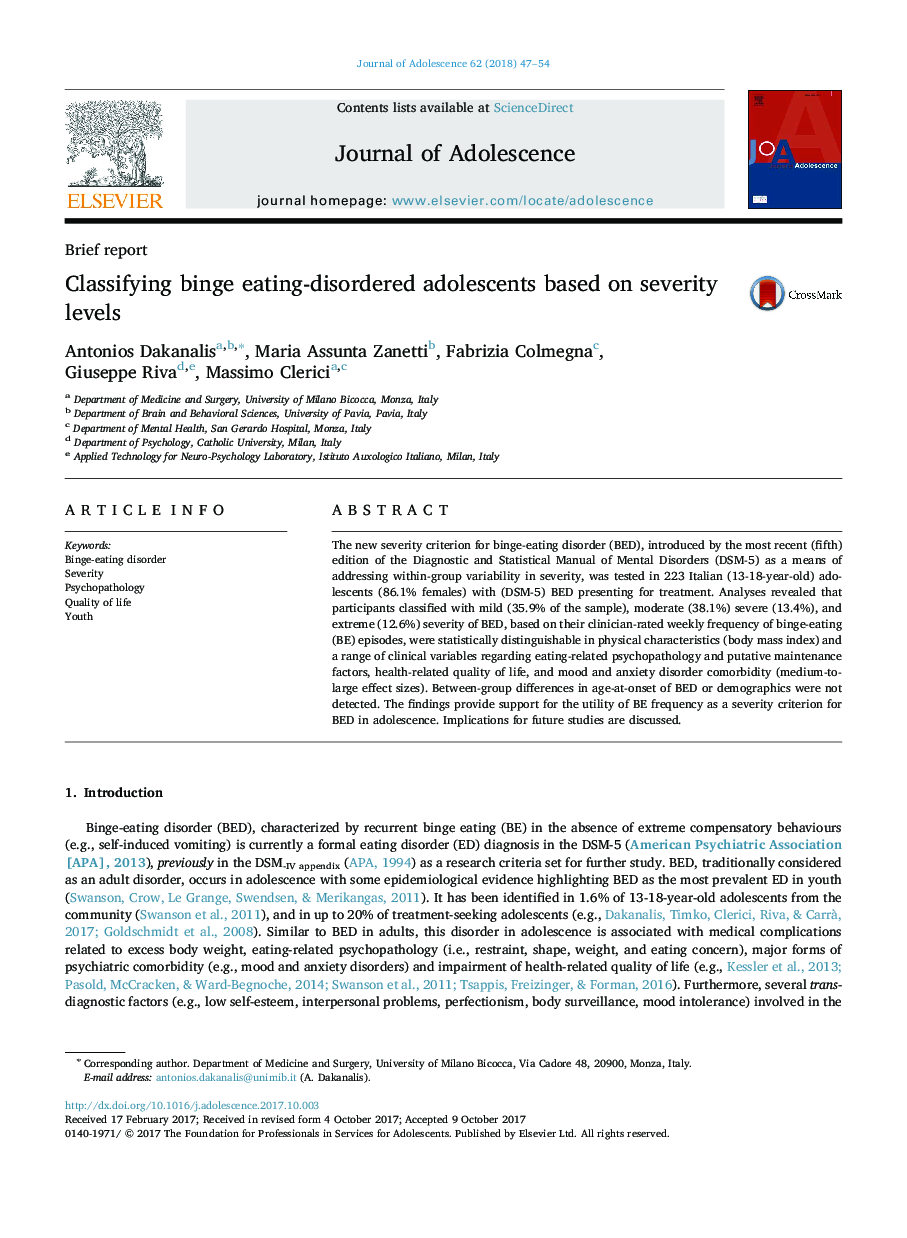| Article ID | Journal | Published Year | Pages | File Type |
|---|---|---|---|---|
| 7241042 | Journal of Adolescence | 2018 | 8 Pages |
Abstract
The new severity criterion for binge-eating disorder (BED), introduced by the most recent (fifth) edition of the Diagnostic and Statistical Manual of Mental Disorders (DSM-5) as a means of addressing within-group variability in severity, was tested in 223 Italian (13-18-year-old) adolescents (86.1% females) with (DSM-5) BED presenting for treatment. Analyses revealed that participants classified with mild (35.9% of the sample), moderate (38.1%) severe (13.4%), and extreme (12.6%) severity of BED, based on their clinician-rated weekly frequency of binge-eating (BE) episodes, were statistically distinguishable in physical characteristics (body mass index) and a range of clinical variables regarding eating-related psychopathology and putative maintenance factors, health-related quality of life, and mood and anxiety disorder comorbidity (medium-to-large effect sizes). Between-group differences in age-at-onset of BED or demographics were not detected. The findings provide support for the utility of BE frequency as a severity criterion for BED in adolescence. Implications for future studies are discussed.
Related Topics
Health Sciences
Medicine and Dentistry
Public Health and Health Policy
Authors
Antonios Dakanalis, Maria Assunta Zanetti, Fabrizia Colmegna, Giuseppe Riva, Massimo Clerici,
